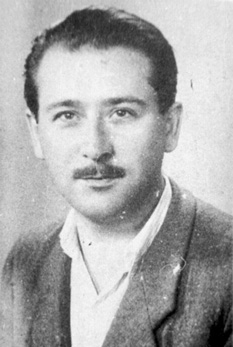Pawłokoma massacre on:
[Wikipedia]
[Google]
[Amazon]

 The Pawłokoma massacre was a massacre on 3 March 1945 of
The Pawłokoma massacre was a massacre on 3 March 1945 of
Jan Maksymiuk: Ukraine, Poland Seek Reconciliation Over Grisly History
in Radio Free Europe NEWS article, 12 May 2006 {{DEFAULTSORT:Pawlokoma Massacre Poland–Ukraine relations 1945 in Ukraine Massacres of Ukrainians during World War II 1945 in Poland March 1945 events in Europe Massacres in 1945 Military operations involving the Home Army Anti-Ukrainian sentiment in Europe Massacres of Ukrainians by Poles Massacres in Ukraine

 The Pawłokoma massacre was a massacre on 3 March 1945 of
The Pawłokoma massacre was a massacre on 3 March 1945 of Ukrainians
Ukrainians ( uk, Українці, Ukraintsi, ) are an East Slavic ethnic group native to Ukraine. They are the seventh-largest nation in Europe. The native language of the Ukrainians is Ukrainian. The majority of Ukrainians are Eastern Ort ...
by Polish forces in the village of Pawłokoma
Pawłokoma ( uk, Павлокома, ''Pavlokoma'', ) is a village in the administrative district of Gmina Dynów, within Rzeszów County, Subcarpathian Voivodeship, in south-eastern Poland. It lies approximately south-east of Dynów and sout ...
west of Przemyśl
Przemyśl (; yi, פשעמישל, Pshemishl; uk, Перемишль, Peremyshl; german: Premissel) is a city in southeastern Poland with 58,721 inhabitants, as of December 2021. In 1999, it became part of the Subcarpathian Voivodeship; it was p ...
. The Polish post Home Army ( AK) unit was commanded by Lt. Józef Biss and aided by Polish men from surrounding villages; the atrocities committed were an act of reprisal to similar, though en masse, attacks carried out on Polish villagers by the Ukrainian Insurgent Army
The Ukrainian Insurgent Army ( uk, Українська повстанська армія, УПА, translit=Ukrayins'ka povstans'ka armiia, abbreviated UPA) was a Ukrainian nationalist paramilitary and later partisan formation. During World ...
. Between 150 to 500 people were executed.
Background
The background to the event was a four-way struggle between Ukrainian, Polish, German, and Soviet forces in the then predominantly Ukrainian region ofVolhynia
Volhynia (also spelled Volynia) ( ; uk, Воли́нь, Volyn' pl, Wołyń, russian: Волы́нь, Volýnʹ, ), is a historic region in Central and Eastern Europe, between south-eastern Poland, south-western Belarus, and western Ukraine. The ...
. Mass executions and violence led to the death of 30,000 Ukrainians and between 70,000 to 100,000 Poles between February 1943 and July 1944.
Massacre
The Polish troops commanded by Lt. Józef Biss herded the Ukrainian villagers to the local church where they were shot. Following the mass shooting, the Poles dumped the bodies in pits at the village cemetery. According to Polish historian Zdzisław Konieczny, the unit killed 150 men. Other estimates of those killed range from 366 to 500.Aftermath
In 1947, the Polish government launchedOperation Vistula
Operation Vistula ( pl, Akcja Wisła; uk, Опера́ція «Ві́сла») was a codename for the 1947 forced resettlement of 150,000 Ukrainians (Boykos and Lemkos) from the south-eastern provinces of post-war Poland, to the Recovered Te ...
that deported Ukrainian residents of the area en masse. Propaganda in schools depicted Ukrainians as traitors, fascists, and "natural enemies" of Poles.
Commemoration
During Ukrainian Prime MinisterViktor Yushchenko
Viktor Andriyovych Yushchenko ( uk, Віктор Андрійович Ющенко, ; born 23 February 1954) is a Ukrainian politician who was the third president of Ukraine from 23 January 2005 to 25 February 2010.
As an informal leader of th ...
's visit to Poland in May 2006, a monument in memory for 366 victims was dedicated in the village.
See also
*Massacres of Poles in Volhynia and Eastern Galicia
The massacres of Poles in Volhynia and Eastern Galicia ( pl, rzeź wołyńska, lit=Volhynian slaughter; uk, Волинська трагедія, lit=Volyn tragedy, translit=Volynska trahediia), were carried out in German-occupied Poland by th ...
* Sahryń massacre
References
External links
Jan Maksymiuk: Ukraine, Poland Seek Reconciliation Over Grisly History
in Radio Free Europe NEWS article, 12 May 2006 {{DEFAULTSORT:Pawlokoma Massacre Poland–Ukraine relations 1945 in Ukraine Massacres of Ukrainians during World War II 1945 in Poland March 1945 events in Europe Massacres in 1945 Military operations involving the Home Army Anti-Ukrainian sentiment in Europe Massacres of Ukrainians by Poles Massacres in Ukraine